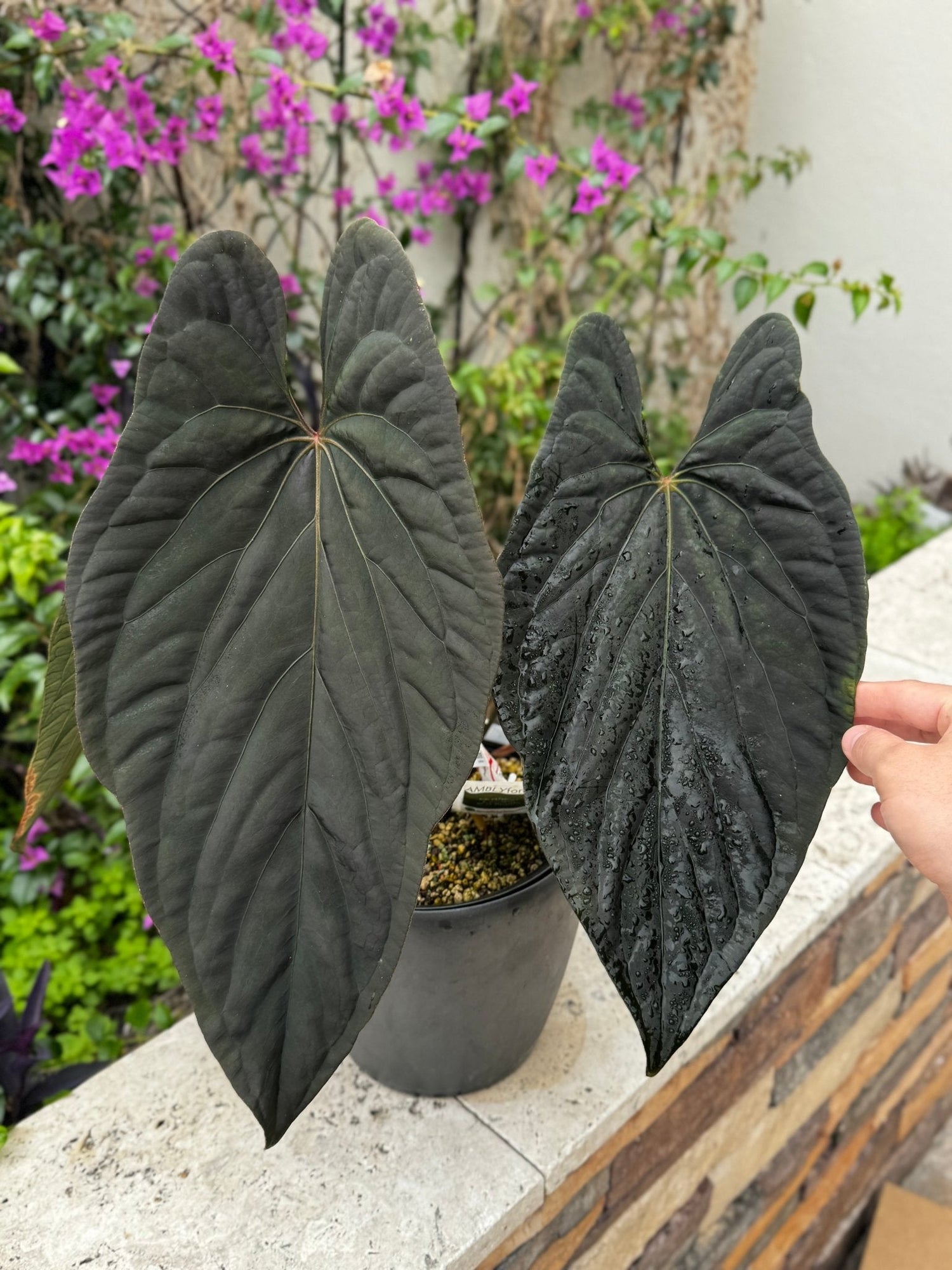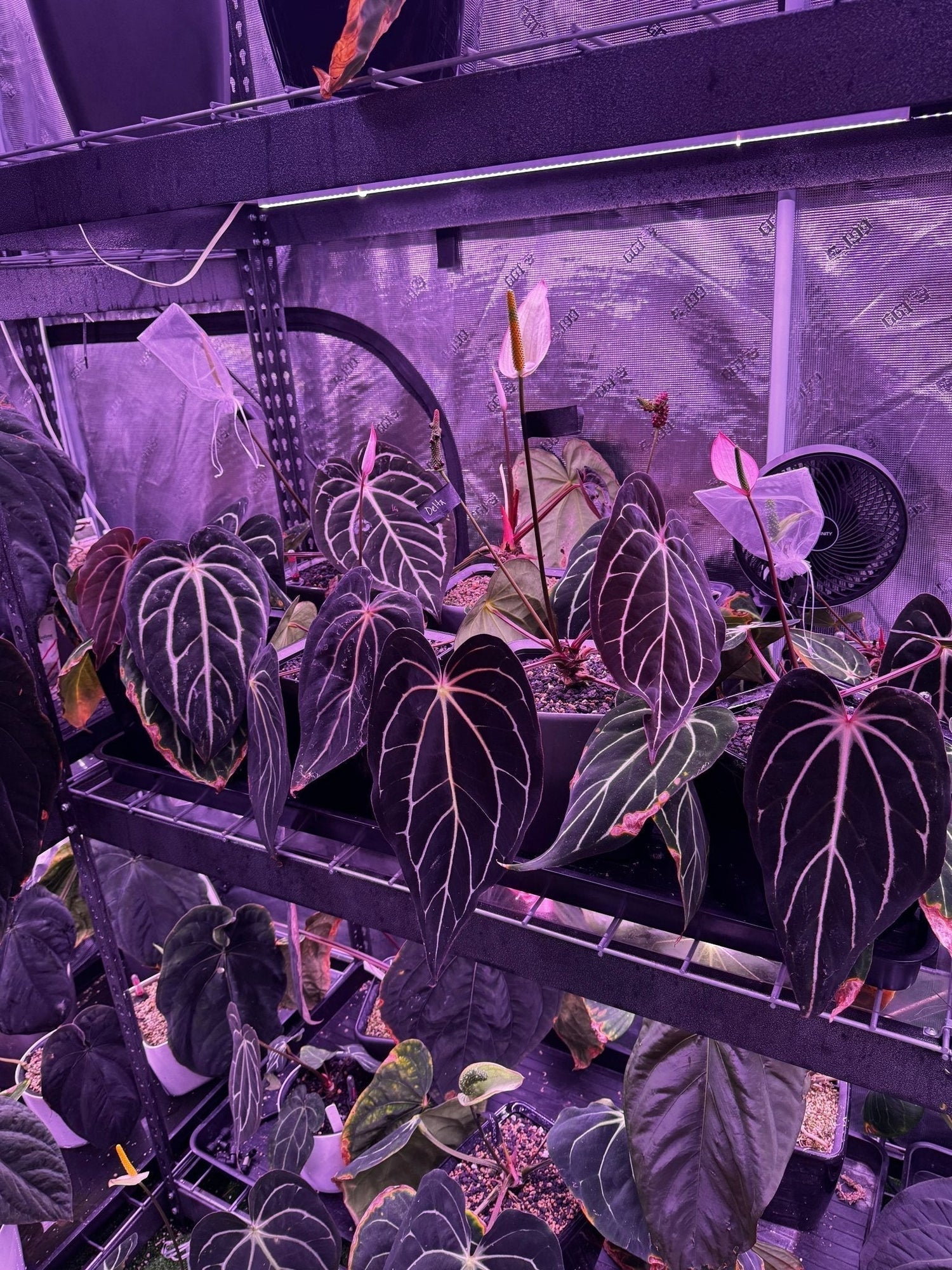What the heck are filial generations (F-numbers)
In this article I will try to explain the meaning and significance of those mysterious “F numbers” that are embedded in many plant names in circulation throughout our community such as JVs famous F2 dressleri, FTG crystal F2 etc etc. It’s a topic that comes up time and time again and it seems like the more people you talk to the more confusing it becomes. I will also touch on a few pitfalls and common misuses of these designations that I’ve noticed. I will likely add some diagrams/figures at a later time to make this a little easier to digest as I know it’s clunky to just explain in words, but I wanted to finally get something posted on this topic.
In short, filial generations at their core are simply a way to communicate how many generations from the parents an individual is in a line breeding experiment. Many people may be vaguely familiar with them as they were introduced in biology/genetics courses most famously with Mendel’s experiments with pea plants. This is how they work:
F0
This is the parental generation, so it’s the plants chosen by the breeder to start their line breeding project. They can be same species or different species. They do NOT have to be wild clones. Also can use the designation P0 for Parental.
F1
The resulting offspring from this initial cross are your F1 generation. Once grown out sufficiently to identify traits desired for your line breeding experiment, siblings from the F1 generation are selected for breeding the next generation.
F2
The resulting offspring from breeding together your selected siblings from the F1 batch are the F2 generation.
F3, F4…F infinity
You get the idea now.
S/selfing
Sometimes instead of using two separate individuals we self a plant (ie using its own pollen from a previous flower on a subsequent flower (or sometimes even on the same flower in certain species especially section andiphilum species like clarinervium)). In this case there is more specific nomenclature to denote that a plant has been selfed which is the “S” designation. For example a first generation selfing would be “S1” ie Ralph Lynam pap x self. If you selfed an S1 individual you would get S2 and so on.

Figure 1: Crude diagrammatic representation of a line breeding project. The toddler level amorphous green blobs are anthurium leaves each representing an individual plant. From the F2 generation multiple paths are demonstrated including continuing the line to F3, selfing an individual or backcrossing an individual to a parent.
Backcross
Another commonly performed practice in breeding is taking an offspring and crossing it back to a parent plant. This is probably a bit beyond intro level and getting outside of your standard F and S line breeding designations but it’s relevant and of particular interest to me. There are several reasons to do a backcross. Firstly, as you continue on down your increasing F generations you can get “inbreeding depression” wherein you get decreasingly fit plants. Crossing offspring back to a parent plant can stabilize/rescue the fitness of the line while maintaining the genetics being emphasized in the breeding line. The other would be to try to add a particular trait to an elite plant (referred to as the “recurrent parent” in backcrossing terminology) by breeding it with another individual possessing this trait (called the “donor parent” without adding additional undesired traits that might be possessed by the donor parent.
In agriculture this might be adding pest resistance to a certain strain of crop. In ornamental plants this could be trying to add a certain interesting vein pattern possessed by a greener carlablackiae (donor parent) to another carlablackiae possessing elite coloration (recurrent parent) for example, without ending up with a bunch of green carlas. In this example you would make your F1 cross using these two carlablackiae and then select an individual from your F1 batch exhibiting the interesting trait you wanted to add to your elite parent and cross that back with your elite parent. The resulting cross would be designation BC1, for backcross 1. You could then take one of these individuals and cross it back again with the elite parent and get a BC2 generation and so on until you’re happy with your results. This is an oversimplification but I think captures the essence of the concept. This is something of particular interest to me and I already have several projects in progress utilizing backcrossing.

Figure 2: Another poorly drawn diagram this time demonstrating a back cross. Here you can see an individual from the F1 generation crossed back with a parent which would be called the recurrent parent in back cross nomenclature. Typically the recurrent parent would be plant with elite genetics and the donor parent would have some single interesting trait, however due to the poor quality of illustration it’s anyone’s guess what these traits may be.
Messier scenarios
Now it starts to get really confusing once you start doing things like selfing in the middle of a line breeding experiment but I’ll go into some funky scenarios here because I do think that they will likely come up more often than you’d think now that so many people are hybridizing. If your head is already spinning maybe take a break here as I think this has been a pretty good overview so far covering most of what you would need to know to navigate this terminology.
So let’s say you make a nice F1 cross using two individuals (your F0/P0 individuals) from a species and you get one particularly awesome offspring and you decide to self it. The resulting batch would technically be an S1, but it’s still second generation from the parents similar to an F2. If you selected another cool plant from this S1 generation and selfed it you’d get an S2 as we touched on above. If you instead, however, selected two separate individuals from this S1 batch and bred them together, the resulting batch would now be considered an F3. You could then continue right along making an F4 from two distinct F3 plants or you could self an F3 plant and make another S1. I think this point here really drives home that this system is really a relative system counting generations from arbitrary points of human intervention. I could take someone’s F25 plant and then just start my own line with it and call it an F1.
Pitfalls, caveats and misuses
Here I’m gonna just list some practical points and personal thoughts bullet style that don’t necessarily fit into the structure of the main article.
*Filial generations refer to a specific line breeding project by a breeder and are relative to that breeders initiation of the project. They don’t have any meaning once the plant is taken out of the context of that specific breeding line. To proceed to a subsequent generation, individuals should be selected for breeding according to the breeders personal/specific goals for the line. Therefore if you buy two random F2 seedlings from a cross and breed them together you aren’t really creating an F3 cross as you aren’t the breeder and are very unlikely to have two plants that were selected by the breeder for next gen breeding in accordance with the goals for the line. For example if you have two random F2 Doc Block plants and breed them together I don’t feel it is appropriate to call them F3 as they weren’t selected by the breeder from the F2 batch if they were sold to you. Furthermore, there is a possibility they aren’t even siblings as he has numerous plants that he has used for breeding and there could have been more than one single F2 batch. In reality this is just a new F1 cross made by you. This is why when I bred together two select F1 RG dressleri clones for example I called the cross F1 x F1 rather than calling them F2. Similarly for the original antolakii round x Felix cross i considered that an F1 cross even though both round and Felix are thought to be F1 seedlings from RA.
*OG circus peanuts is an F1 hybrid. Its selfed offspring are often denoted circus peanuts F2 which while not entirely inaccurate would be more precisely denoted Circus Peanuts S1.
*crossing a plant with a separate clone/division of itself is still selfing. It doesn’t matter if someone from across the world sends you pollen from their RA 5 pap clone to put on yours, it’s still a selfing.




